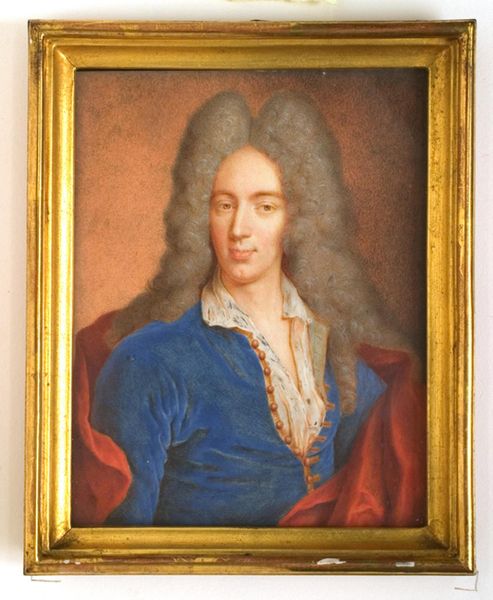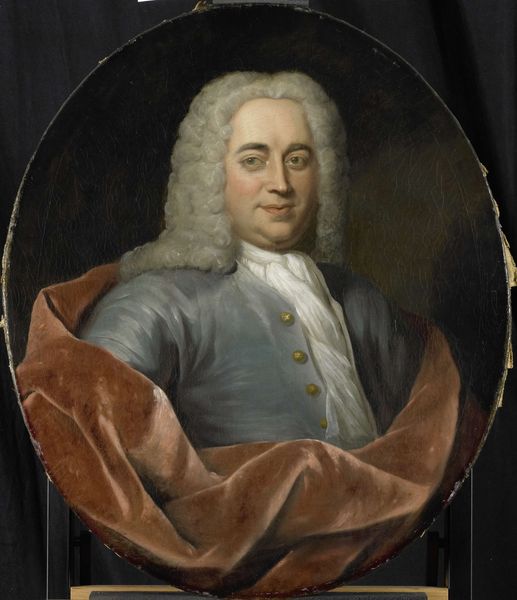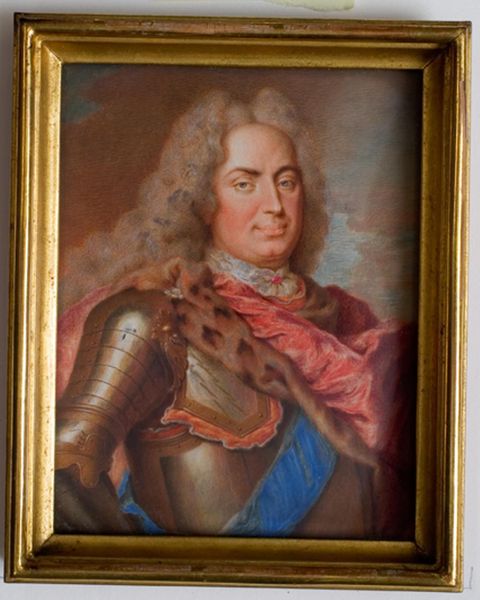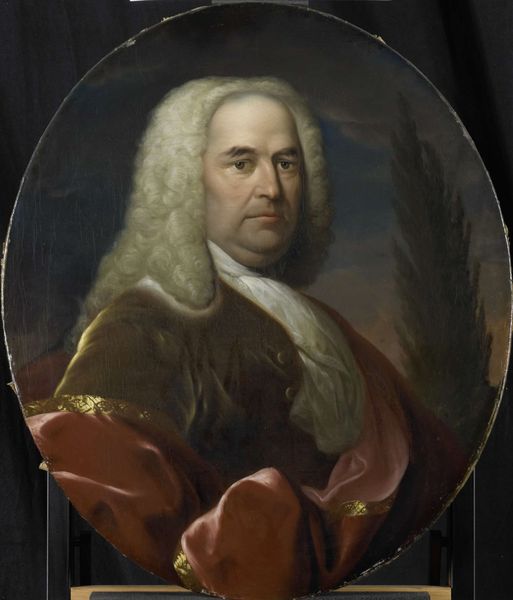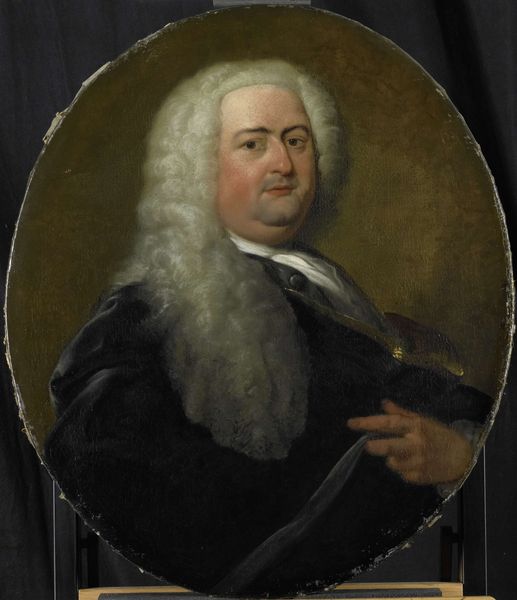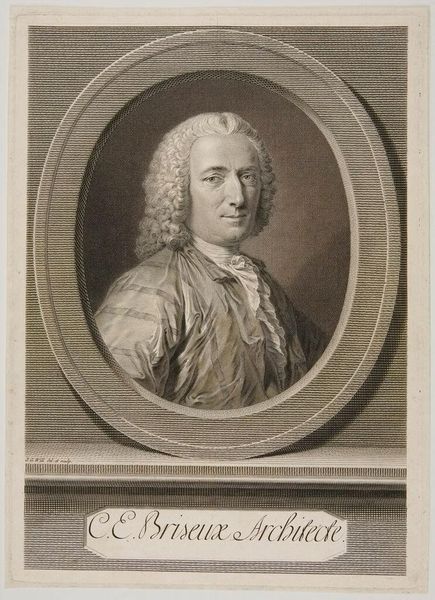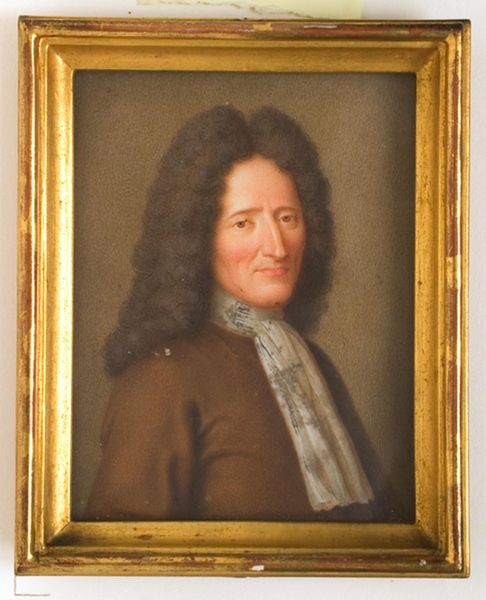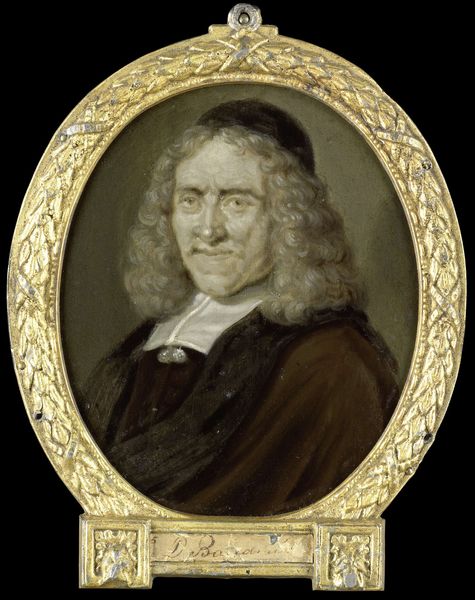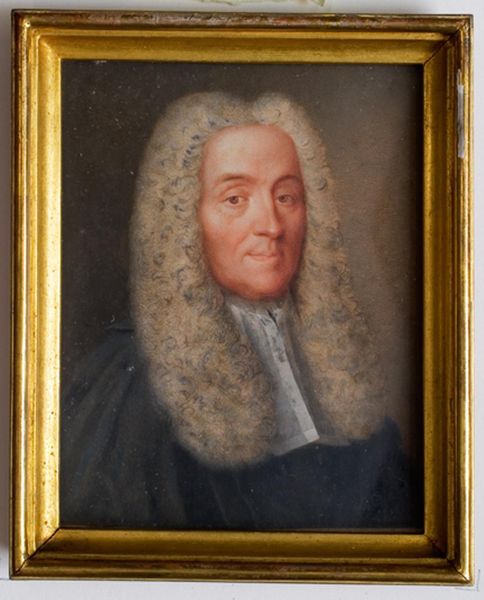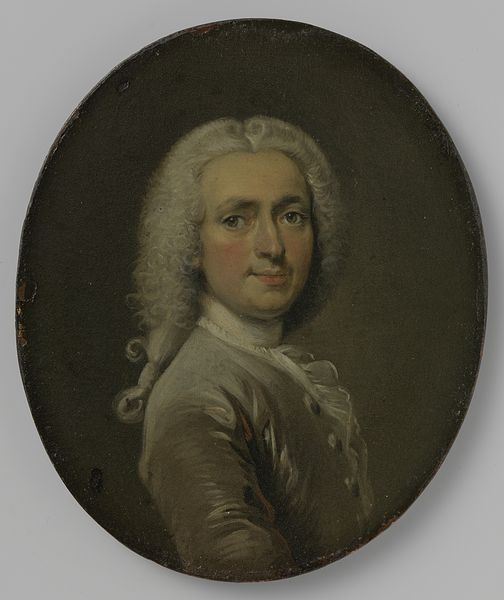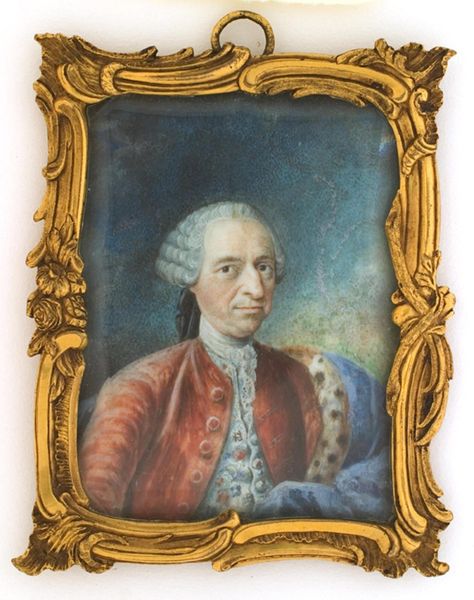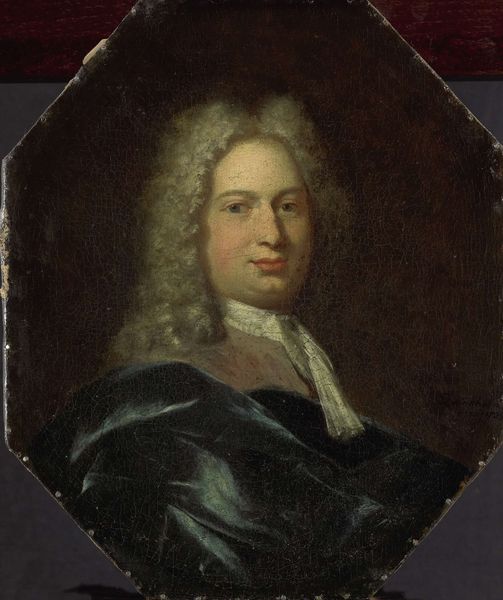
oil-paint
#
baroque
#
oil-paint
#
oil painting
#
history-painting
Dimensions: 11.3 cm (height) x 8.8 cm (width) (Netto)
Curator: Welcome. We're standing before "Herre med brun frakke," an oil painting, probably created sometime between 1726 and 1748 and which resides here at the SMK, Denmark’s National Gallery. Editor: It’s undeniably intriguing. I'm struck immediately by the restrained palette and the almost ethereal quality of the sitter’s face. There’s something very calming, almost too smooth, about the entire composition. Curator: Considering the materials and techniques available at the time, and knowing it’s likely from the Baroque period, this portrait probably catered to a specific clientele within the Danish elite. Portraits like these functioned as powerful social markers. Editor: Absolutely, we see this language played out in his brown coat – simple enough, but finely rendered – and the subtle gold accents of his waistcoat and buttons. The clothing speaks of wealth, yet the man’s expression seems almost detached from those trappings. How do you read his expression? Curator: Good question. The gaze meets yours but it also holds a touch of the melancholy often expressed by the elite during the long period of peace in the first half of the 18th century. Oil paint was really at the center stage then, often imported for the portrait production for those with economic resources. This would make the portrayed figure even more remarkable to viewers, being able to afford those techniques and resources. Editor: The very controlled brushstrokes emphasize textures, yes, but they also work to subdue emotion, flattening him. Looking closely, his powdered wig stands out—a visual cue signaling both social status and adherence to a specific fashion. It contributes to an aesthetic of cultivated appearance and controlled persona that characterized the art of portraiture in the baroque. Curator: Agreed. Let’s not forget the production timeline, too. It represents the end of the Danish absolutism under Christian VI’s pietistic leadership. What does that political element lend the work? Editor: Hmm, that’s an interesting lens. I would have analyzed more closely his gaze first or tried to dive into a potential philosophical interpretation based on the palette before reaching history. The formal arrangement with emphasis on the figure’s dress is compelling. Still, by recognizing the social forces influencing his image, his attire gains a whole new complexity. Thank you. Curator: The piece rewards varied levels of investigation. Editor: Indeed. It’s fascinating how the careful execution in paint both reveals and obscures information. It opens my eyes to other interpretations for sure!
Comments
No comments
Be the first to comment and join the conversation on the ultimate creative platform.
